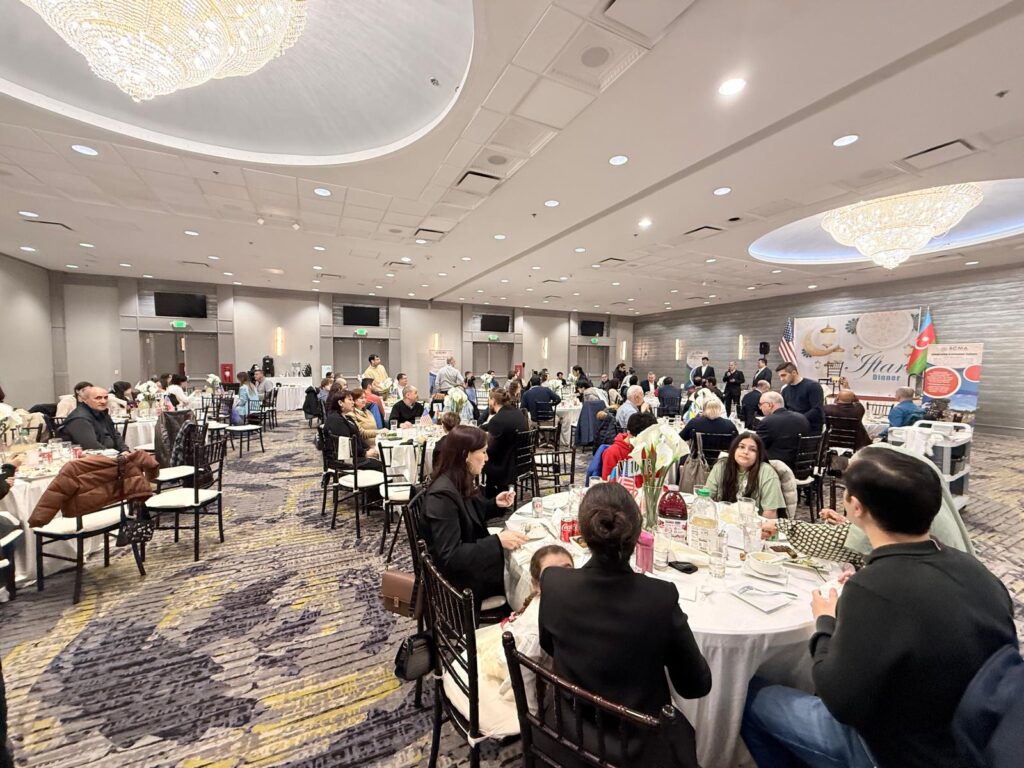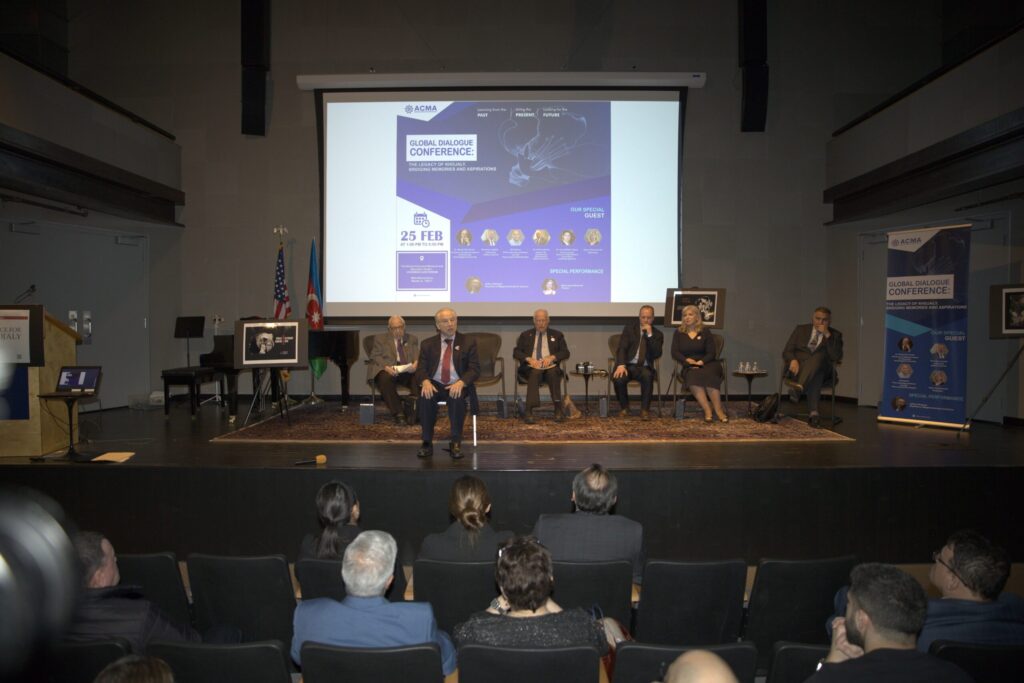History of Karabakh Music
Existence of pieces of music in “Kitabi-Dede Gorgud” epos, mentioning of names of some musical instruments there are real evidences of ancientness of Azerbaijan music. Karabakh music which has great importance in history of music of Azerbaijan is distinguished with its antiquity and uniqueness. In public celebrations and religious ceremonies music was performed from ancient times. Ashig’s art is reaaly outstanding with its antiquity. Historically one of the ashig regions in north Azerbaijan was Karabakh ashig environment. Ashigs were tried in Karabakh for reciting complex formed poems extempore. During the Ashig Valeh’s time performance of ashig music was flourishing. Ashig Valeh was real master in his field. “Karabakh shikestesi”, “Kesme shikeste”, “Bash Saritel” and “Orta Saritel” are products of his activity. Sari Ashig who lived in XVIII century was famous for his bayatis. He wrote mostly in this genre by challangeing the opinion that “reciting bayatis is business of women”. Works of Ashig Mahammad (1834-1914), Ashig Aziz (1825-1918), Ashig Huseyn (1800-1880), Ashig Ali (1807-1917), Ashig Alasgar (1821-1926), Molla Juma (1855-1919) and others influenced positively development of Karabakh ashig art. Karabakh brought up first female professional ashig Ashig Pari. This happened in the joint of master stage of folk literature. In the mid of XIX century Azerbaijani people had been benefiting from Western and russian culture in spite of the colonialist policy of tsar. Regarding with this new life of culture was bubling in Azerbaijan. In karabakh, particularly in Shuha science and literary activity was growing. Begininning from Vagiph’s time, Shsuha became famous literary center of all Azerbaijan. First time in the history of Azerbaijan’s culture theatre, circus, european and eastern concerts, music, science and art meetings, printing house, library, real college, seminary and intelectual institutions were established in Shusha. Begining from 40th years of XIX century different fields of art were in progress. Theatre plays were performed by amouters. By the way we have to mention that in the history of Caucasus plays first time were shown in 1845 in Tbilisi. That time first theatre plays in Shusha, competing in terms of trade and culture with Tbilisi were shown in 1848. In spring of 1891, after the construction of theatre building by H.A.Khandamirov , one of the well-off people of Shusha the amount of plays increased. City residents were very much enthusiastic about these plays. It is not coincidence that well-known tragedy of Shakepeare “Otello was performed firstly in Shusha.
Beginning from 1st half of XIX century alongside with various fields of art khanandas (who sing mugam) were improving. Art of khanandas developed in Karabakh region, particularly in Shusha more than any place of Azerbaijan. It is apparent that it was related to Shusha’s geografical setting, on the other hand city’s cultural-economic relations.
In comparison with other cities of Azerbaijan there were more musicians and dancers in Shusha.
It is not coincidence that prominent musician V.Vinogradov who had research about history of Azerbaijan music stated the followings by telling role of Shusha musicians in the history of Azerbaijan musical culture:
Shusha with its green earth on mountains is so picturesque. Its spectacular scenery attracts tourists each year, its moderate traits astonishes visitors. But the amazing impression got from landscape is not all . In comparison with other regions here music is more prevalent. Here you can always listen folk songs, khanandas, singers and watch dances. Shusha was known as musical center and gained fame as a school of folk music masters in all Caucasus.
“Musicians of Shusha created the history of Azerbaijan music and represented it not only in their motherland but also other countries of East (V.Vinoqradov. Uzeir Gadjibekov i Azerbajdjanskaya muzıka. M. 1938 page. 9). In accordance with the development of art of khananda music halls, meetings, clubs and musical schools were established in Shusha during 70-80th years of last century. Founders of musical schools were Kharrat Gulu and Molla Ibrahim. Professor Bulbul mentioned that students were taught lessons till 13-14 ages by Molla Ibrahim, students over 14 were taught by Kharrat Gulu.
Kharrat Gulu Mahammad oglu (1823-1883) was the most well-known musician of that time. He knew classical Eastern music perfectly. He also wrote poems. He has many poems and gazals. As well as he had beautiful voice. He organized meeting and invited singers with good voice teaching them secrets of mugam and singing. That meeting had religious purpose but despite it had profound place in the development of vocalist art inAzerbaijan, caused appearance of Haji Husu, Mashadi Isi, Sadigjan,Abdulbagi Zulalov, Jabbar Garyagdioglu, Kecacioglu Mahammad and others.
After his death “meeting of Musicians” was created in Shusha by khananda Haji Husu and scholar –musician Mir Mohsun Navvab. In that meeting problems of music and art were discussed and they paid heed to right singing and mastership of singers. Beginnig from 80-90th of XIX century khanandas had been performing in theatre plays with breaks. First plays were performed in Tbilisi and Shusha. Performances of Khanandas triggered invent of Azerbaijan musical theatre. And also this paved the way for the emergence of eastern concerts. In the begining of XX century singers began to show up on the stage independently. First East concert was held in summer of 1901 in Azerbaijan. In the concert held in “Khandamirov theatre” in Shusha famous artists such as Jabbar Garyagdioglu, Kechachi Mahammad, Mashadi Dadash, Sadigjan, Mashadi Zeynal, Ata Bagdaguloglu, ashigs such as Abbasgulu , Najafgulu and others participated under the leadership of Abdurrahim bey Hagverdiyev. Teacher of French, well-known jurnalisdt Ahmed bey Agayev who attended concert as spectator wrote:
“… Audience was listening to original turkish music and folk music with great passion.” (“Kaspi” . January 11,1902. #9)
Literary, music and art meetings were held in Shusha in the 90th of XIX century. These meetings include meeting of musicians (leader was Navvab), penmen (leader was Karbalayi Safikhan), khanandas (Haji Husu), nusxebendler (Mashadi Akbar) mosaic (Karbalayi Safarali and Navvab), architects (Karbalayi Saphikhan) and so on. It is obvious that as a result of activities of these meetings Shusha became enourmous center of art and music.
Shusha had been attracting attention of all as land of culture and recreation in the beginning of XX century. Spectacular 2-3 stored residential bulidings, comfortable hotels, nice baths, cold springs, stores full of marketable products, especially bulevard with beautiful flowers, “Summer club”, interesting theatre plays and music sounds of each house astonished visitors. Particularly, for that reason Shusha was called “Conservatory of Caucasus”. All people strived to see this city, to taste from cold water of its springs, to watch horse race at Jidir, to tatse kabab from the meat of Karabakh lamb, delicious meals of Kabla Maharram, lavash of Molla oglu, pakhlava of Kabla Mehdi and Karabakh vodka. Especially, in summer month the life in the city became vibrant. Local amoteurs Azad bey Amirov, Ahmed bey Agdamski and others performing opera and operettas of Uzeyir Hajibeyov gave pleasure to the residents. So, Shusha was music center of Azerbaijan and conservatory of Caucasus in the begining of XX century. In that time all musicians and artist were from Shusha. It is not coincidence that Shusha was called the lands of gifted ones. These talants are the output of Shusha literary- music meetings and Karabakh vocalist-school.
One of the outstanding representatives of Karabakh land in the end of XIX and beginning of XX century was Uzeyir Hajibeyli (Hajibeyov), genious composer, founder of first opera in the East, great dramatist, author of first liberetto, genre of musical comedy and hymn of Azerbaijan. Till the 20th of XX century life was booming in Shusha, conservatory of Caucasus and center of Azerbaijan’s vocalist school. During summer months people coming from Middle Asia, Russia, Iran and Turkey were enjoying forests, cold springs, and immencely fresh air. They could not stop listening to Karabakh khanandas. Karabakh singers had been telling interesting stories about Azerbaijan music from each home, each corner to their guests. In that time there was statement :
“When children cry, “Segah”, when children laugh “Shahnaz” is performed.”
We can say bravely that no country brought up so many talanted musicians as many as Shusha brought up. Shusha gave birth to Khurshid banu Natavan, Mir Mohsun Navvab, singers Kharrat Gulu, Hajı Husnu, Sadıqjan, Mashadi İsi, Abdulbağı Zulalov, Jabbar Garyagdıoglu, Kechachi oglu Mammad, Mashadi Mammad Farzaliyev, Islam Abdullayev, Seyid Shushinski, Bulbul, Zulfi Adıgozalov, Khan Shushinski, Rashid Behbudov, Mashadi Jamil Amirov, Gurban Pirimov, composers Uzeyir Hajıbayov, Zulphugar Hajıbayov, Fikrat Amirov, Niyazi, Afrasiyab Badalbayli, Soltan Hajıbayov, Ashraf Abbasov, Suleyman Alasgarov and others. And it is not complete list of Shusha musicians. “Shusha vocalist school” has important place In the East as the position of “Italy music school” in Europe. Before it was called “Italy of Caucasus”.
Source:
Firudin Shushinski, Book “Shusha”









